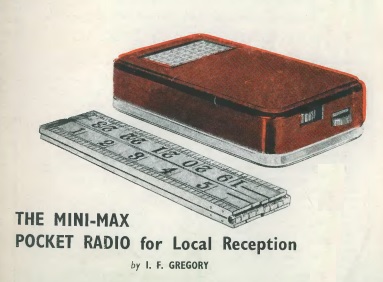Sixty years ago, it was clear that the transistor was here to stay, and virtually all of the magazines for electronic hobbyists were filling up with construction articles featuring solid-state circuits. More often that not, the project was a transistor radio of some sort. This British example appeared in the March 1957 issue of Radio Constructor magazine.
This set was billed for local reception, but it made up for any lack of sensitivity in the fact that it would provide “loudspeaker” volume. In this case, the speaker was actually originally intended as a headphone element, but the set would put out 40 mW of audio, more than enough to listen to the set without any difficulty.
The set was constructed in a sandwich box cut to size. The author noted that the dimensions given in the construction article were intended for one particular brand of box. So if you want to recreate this set exactly, you’ll need to track down a British “Elevenses Pack” sandwich box. The circuit inside the sandwich box consisted of a diode detector followed by four stages of audio amplification. The set had a built-in loopstick antenna, and would presumably pull in those local stations without an external antenna or ground connection.
The author noted that the industry wasn’t quite ready to supply experimenters with components to construct a small superheterodyne receiver. Small IF transformers were available, but none of them were in the subminiature category. Transistors suitable for medium wave were hitting the market in the U.K., but the small transformers needed for a superhet weren’t yet available “comparable to those available in the States.” But this crystal set with lots of audio amplification would serve the purpose for pulling in the strong local signals, and the hobbyists who built it were undoubtedly the first on their block to own a transistor radio.


